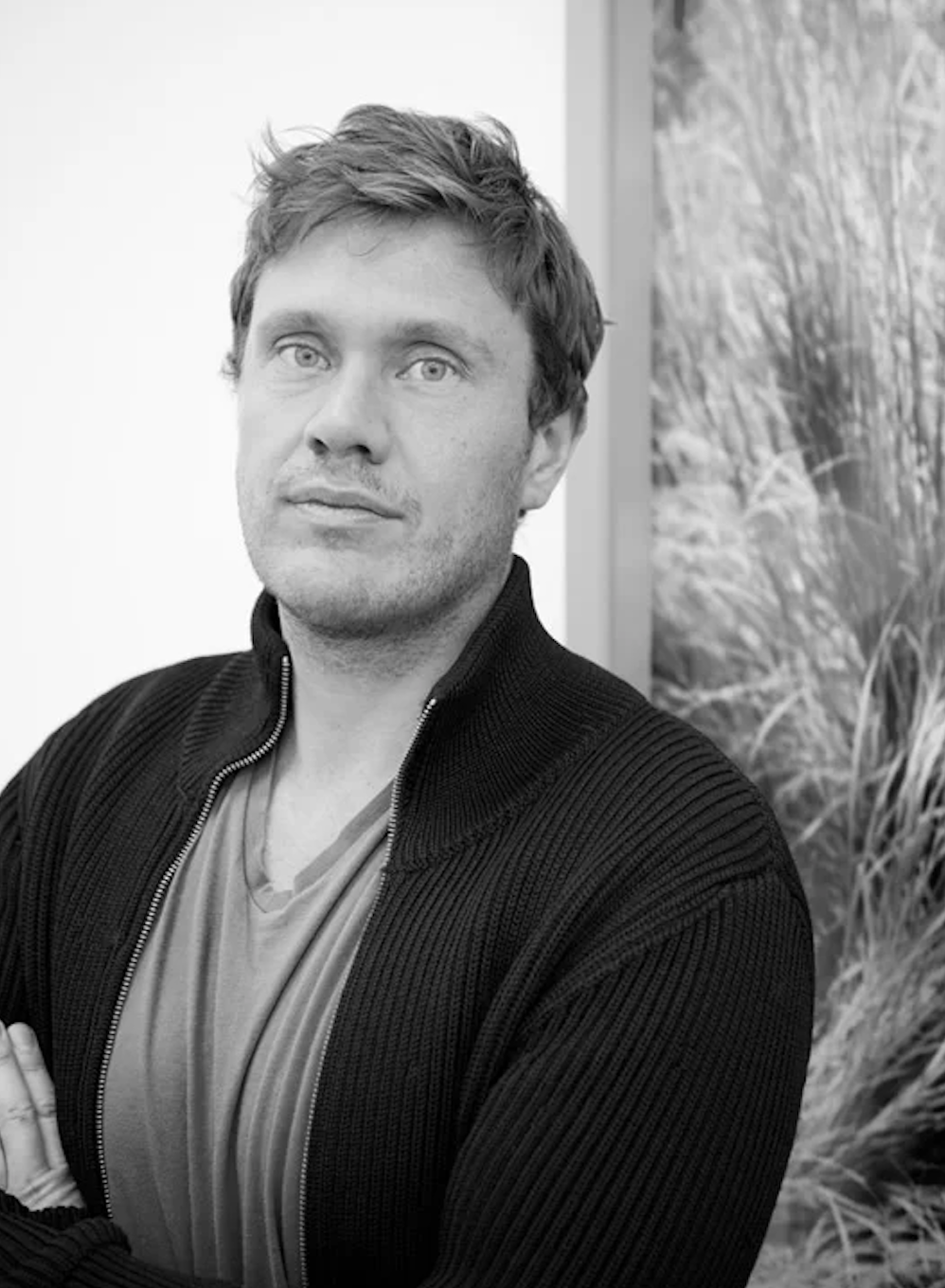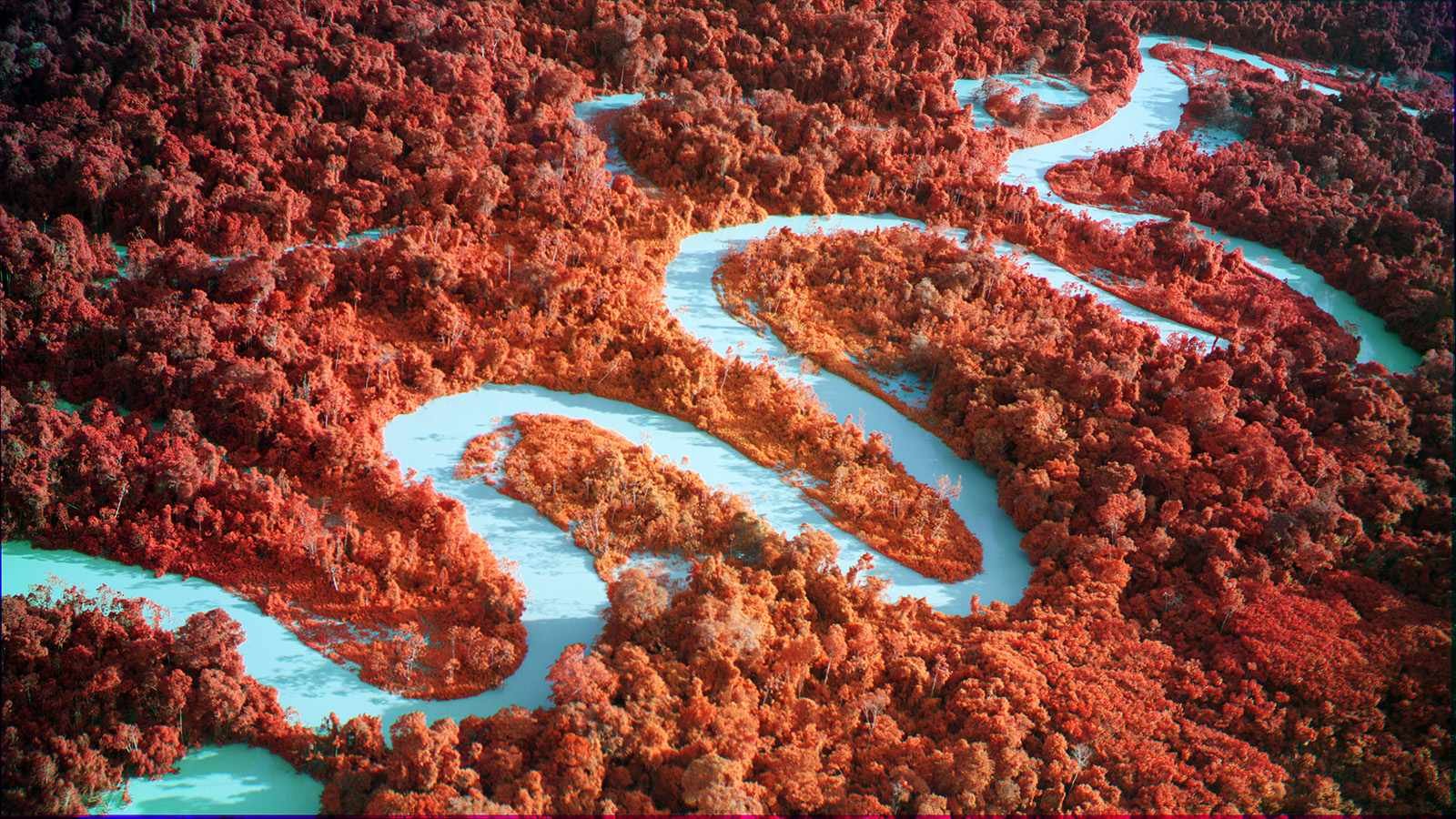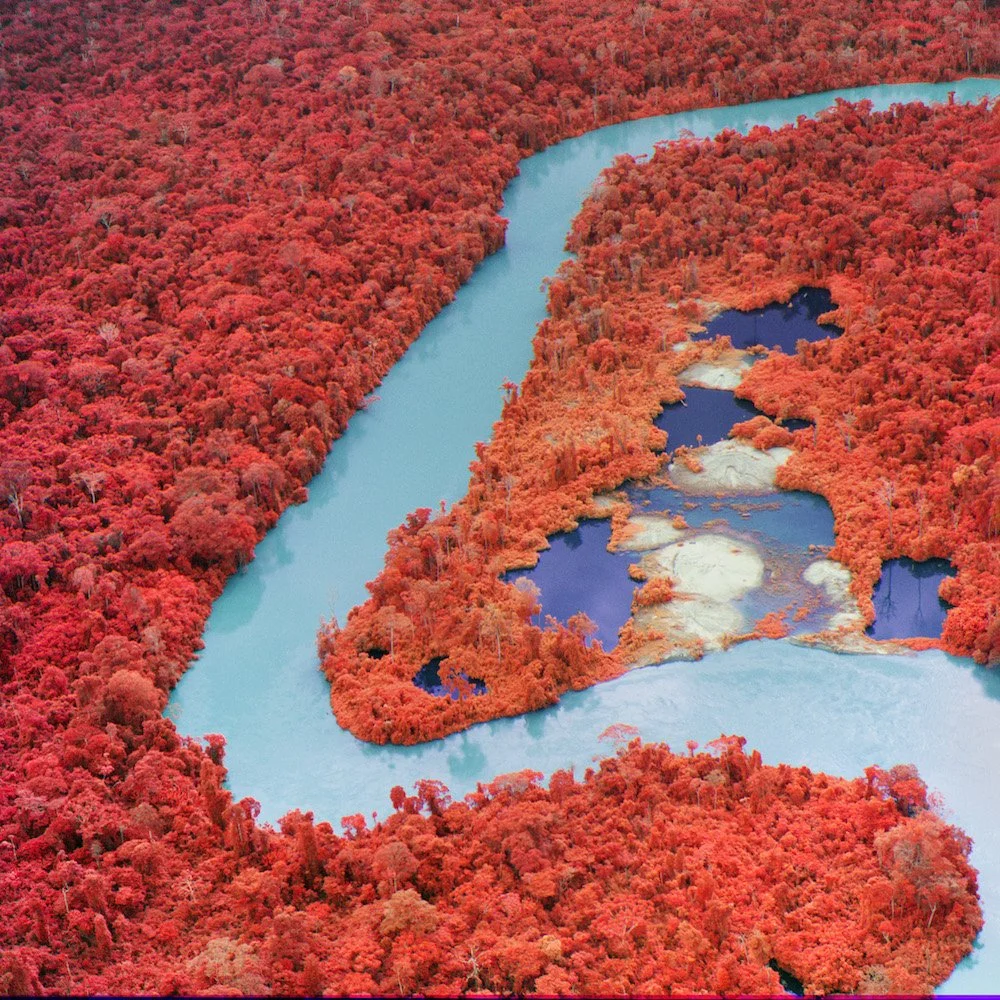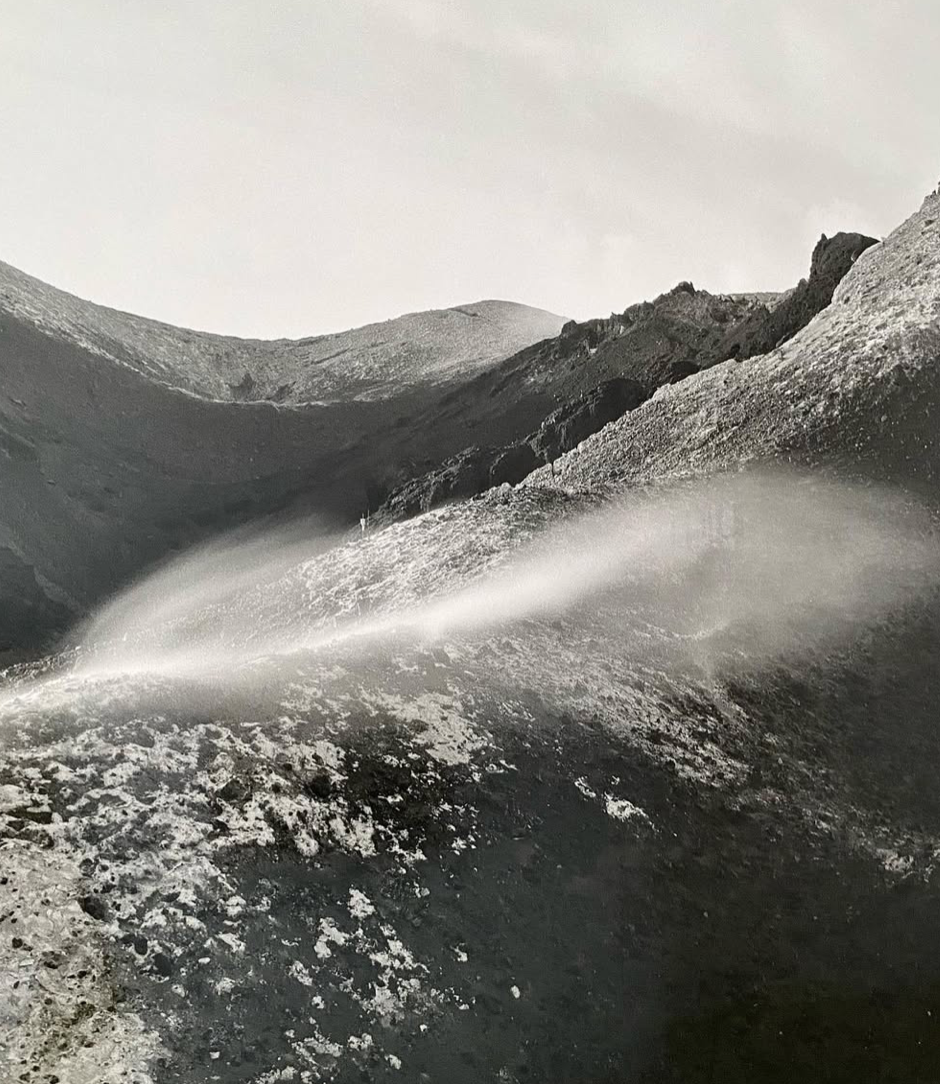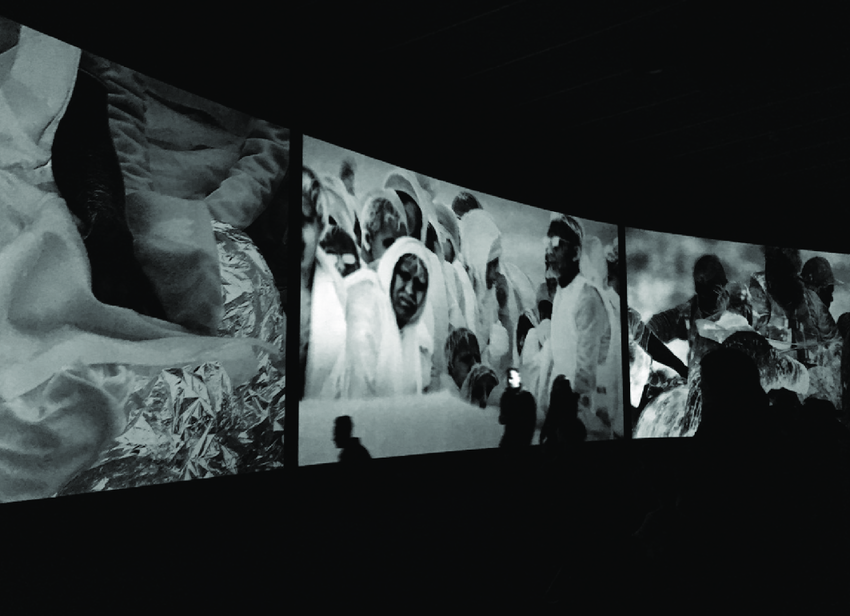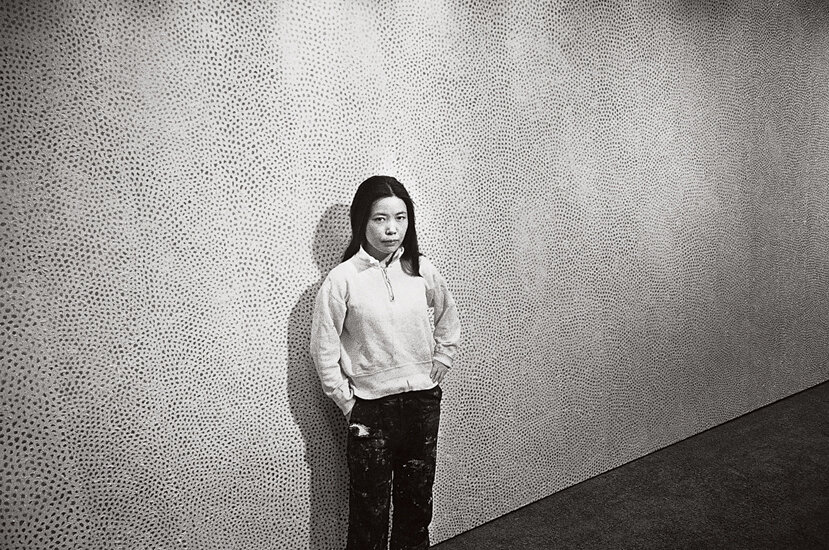Richard Mosse is a boundary-pushing, conceptual artist whose work bridges the realms of photography, documentary, + fine art. Known for his innovative use of unconventional mediums, particularly infrared film, to explore themes of conflict, human suffering, + environmental devastation, his artistic approach is both deeply political + visually arresting. Often transforming landscapes + war zones into surreal, hauntingly beautiful images, Mosse’s work is characterised by a sensitivity to the complex relationship between beauty + violence, inviting audiences to engage with the unseen + the often unacknowledged aspects of global crises. Having shone a light on a variety of global catastrophes including postwar ruins in the former Yugoslavia, cities devastated by earthquakes in Iran, Pakistan, + Haiti, the occupied palaces of Saddam Hussein, airport emergency training simulators, the rusting wreckage of remote air disasters, nomadic rebels in the Congolese jungle, Mosse’s technical mastery combines with a profound, introspective commentary on the human condition + the state of the world makes for a collection of work that haunts as much as it halts.
Currently based in New York, the Irishman, whose work captures the wrath + devastation of humanities darkest traits, brings a unique perspective to contemporary art, blending his rich cultural background with his profound engagement with global conflict. His work is a striking exploration of beauty + discomfort, where infrared film transforms war zones + landscapes into otherworldly visions. As an Irishman too, Mosse carries with him the weight of history, a subtle influence that informs much of his work, where the effects of violence + human suffering are captured not just as images, but as complex narratives that evoke both profound empathy + immense reflection.
In understanding Mosse’s work, his project, The Enclave — a photographic series that documents the brutal conflict in the Democratic Republic of Congo, through the use of infrared film — captures both the surreal beauty + the devastating human impact of the war. The lush, vibrant colors in his infrared photographs in general create a surreal landscape that contrasts sharply with the devastating cost of war on humankind. His ability to show both the beauty of the land along with the horror of its destruction speaks to his profound understanding of how landscapes shape, + are shaped by, human conflict. Along with his work on the effects of war, Mosse delves into the environmental crisis facing one of the world’s most vital ecosystems, the Amazon Rainforest. Using his signature infrared film here again, he captures the dense, vibrant forests in hauntingly beautiful images that contrast the natural splendor of the Amazon with the looming threat of deforestation + exploitation. Mosse's work in the region, like much of his art, is not just about the visual allure of the landscape but also a poignant commentary on the destructive forces impacting the environment. His images invite viewers to reflect on the fragile relationship between nature + human activity, offering a profound, urgent perspective on the need to protect these irreplaceable ecosystems.
What’s particularly compelling about Mosse’s work, as a conceptual documentarian + photographer, is the delicate balance he strikes between aesthetic + political commentary. He invites viewers to not only see the conflict through a different lens but to feel its weight — a weight mostly reserved for those directly effected yet a weight very much brought to life for audiences of his work upon experiencing it first hand. You can’t help but feel part of it. His art is emotionally striking — each image a meditation on the human cost of violence, both physical + environmental. As an Irish artist, Mosse brings an intimate awareness of conflict's history + its ongoing presence in global affairs. His work feels both deeply personal yet vastly universal, encouraging us to engage with the complexity of the world in a way that’s as stirring as it is beautiful. It’s rare to find art that’s so visually stunning while also demanding such a deep, introspective response + Mosse achieves this with remarkable sensitivity + insight.
Mosse studied photography at Yale University + Fine Art at Goldsmiths, London. He also studied English Literature at King’s College, London, + Cultural Studies at the London Consortium. He represented Ireland at the 55th Venice Art Biennale in 2013 with his immersive multi-screen video installation which he shot on 16mm infrared film in Eastern Congo + his work is represented by the Jack Shainman Gallery in New York where he lives with his family.
Discover more at RICHARD MOSSE

